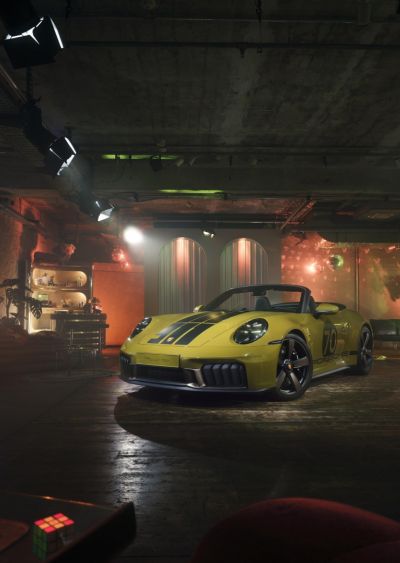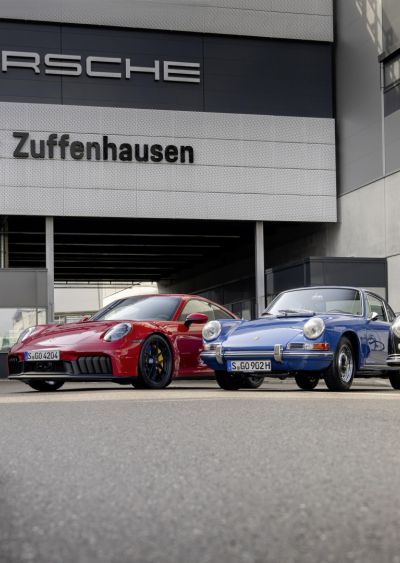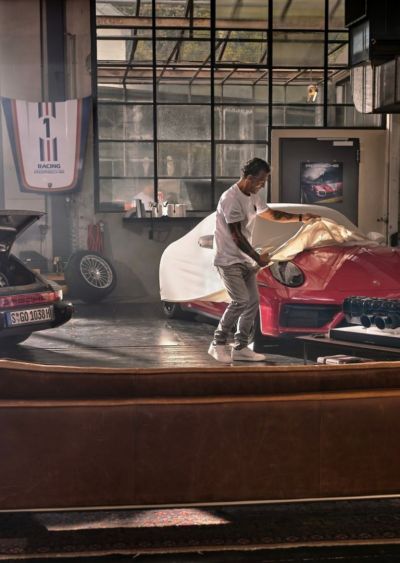The Carrera RSR
The factory price for the Carrera RS was about $14,000. Conversion Order 491 produces a $22,500 RSR. The front fenders are widened, the rears flared out even more. The fiberglass front "bumper" becomes a spoiler with a central air intake for the oil cooler. There's a roll bar, a fire-extinguishing system, a 29-gallon (110-liter) plastic fuel tank (or, for $1500 more, a 120-liter safety tank), double-harness seat belts for the driver, a real racing seat for him and a token seat for a passenger, plus a 10,000-rpm tach. The front suspension's torsion bars are bigger and three sizes of adjustable front anti-roll bars are available. At the rear, again the torsion bars are bigger; here there's only one size anti-roll bar to be had but it's adjustable, too. Bilstein shocks of a specific adjustment range are used at both ends.
The RSR's wheels and tires are the latest evidence of a long-building trend to greater difference between front and rear width, as well as greater overall width. The front wheels are 9 in. wide and carry super-low-profile Dunlop 230/ 600-15 tires; at the rear the rim width is 11 in. and the tires 260/600-15.
Brake discs for the RSR are straight from the 917 Can-Am car—radially vented and cross-drilled—and are applied by the 917's 4-piston calipers. Front-to-rear braking power distribution can be adjusted to suit individual circumstances.
The Carerra RSR engine is one large step further developed than the RS unit, which is tuned not much differently from the 911S engine. Bore is taken out another 2 mm to give 2807cc; the compression ratio is raised from 8.5:1 to 10.3:1; the cam timing made as radical as practical for racing use; the fuel injection recalibrated; but the engine retains only one camshaft per bank. Some handwork is done on the engine case and porting to improve breathing, but generally the materials are the same.
Naturally, the power curve moves to the right as well as up: whereas the RS gets its 200 bhp at 6300 rpm (actually 200 rpm lower than the 911S) the RSR generates its 280 bhp at 8000 rpm. Only the 5-speed gearbox is available—the RS can be ordered with a 4-speed or 5-speed—and the RSR transmission has a pump for pressure lubrication and its own oil cooler.
So there you have it—what Porsche thinks it takes to make the 911 into a winning race car these days. That the Carrera RSR is already winning car hardly needs to be said what with the Daytona, Sebring, Targa Florio and Trans-Am victories you've been reading about. This car comes close to being a winner "out of the box," and farther along we'll see what a Porsche racing expert thinks is responsible for the fantastic performance of the car.








